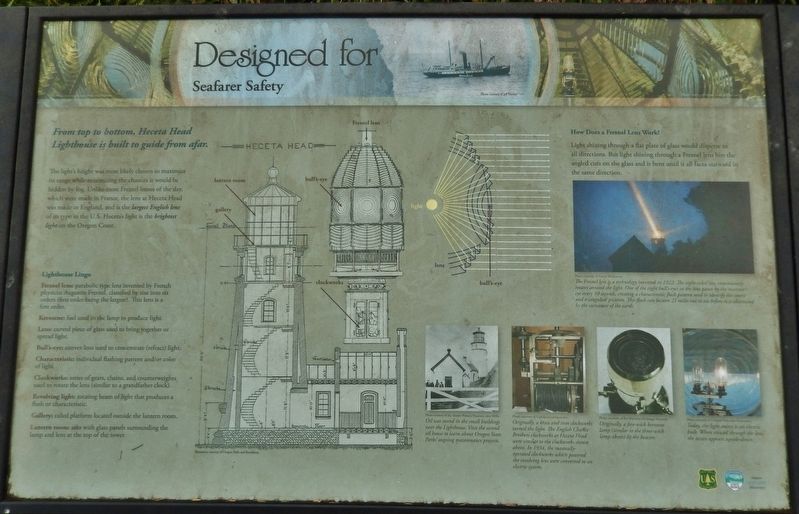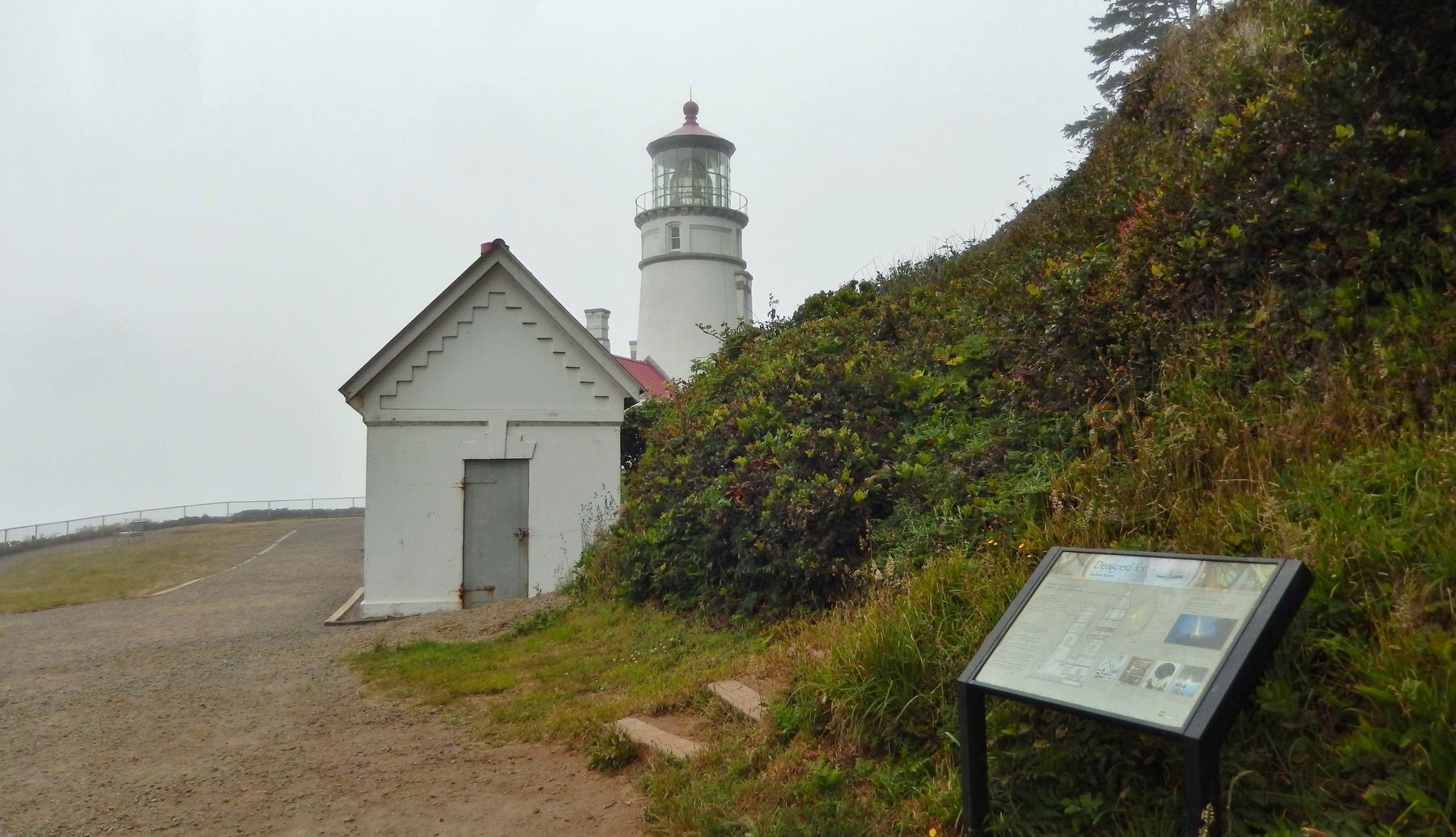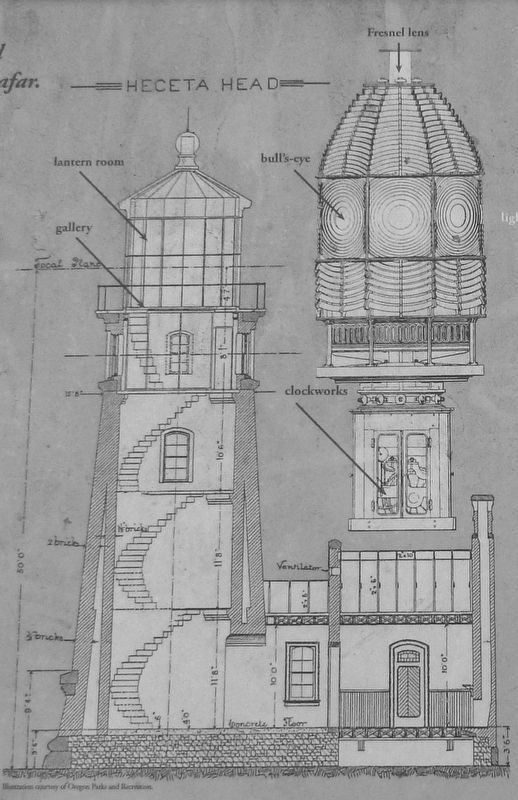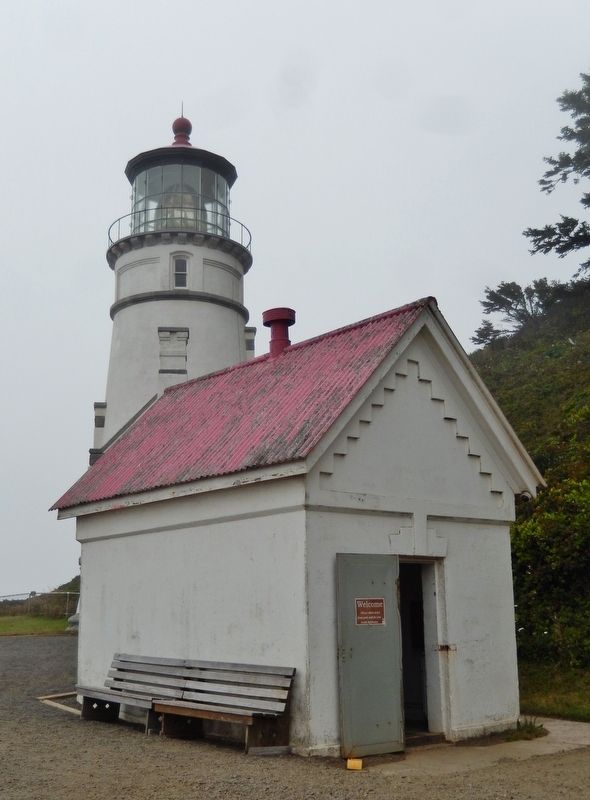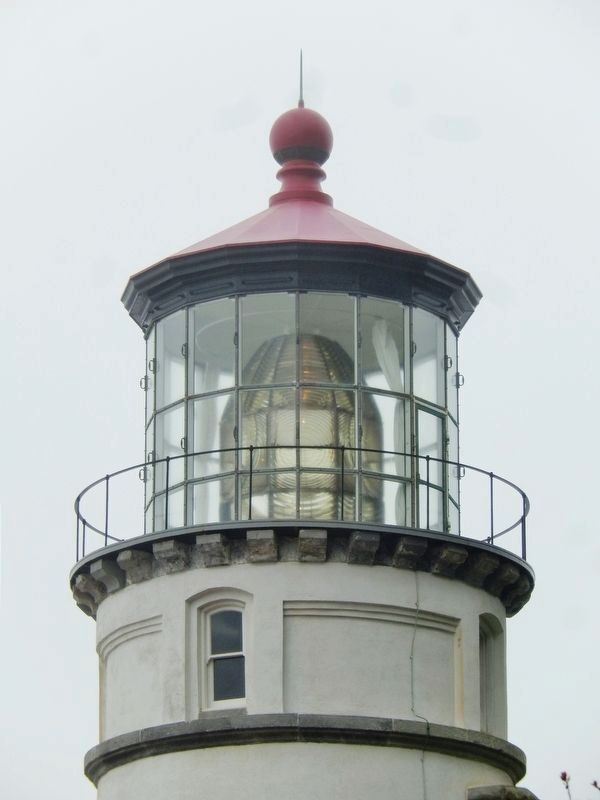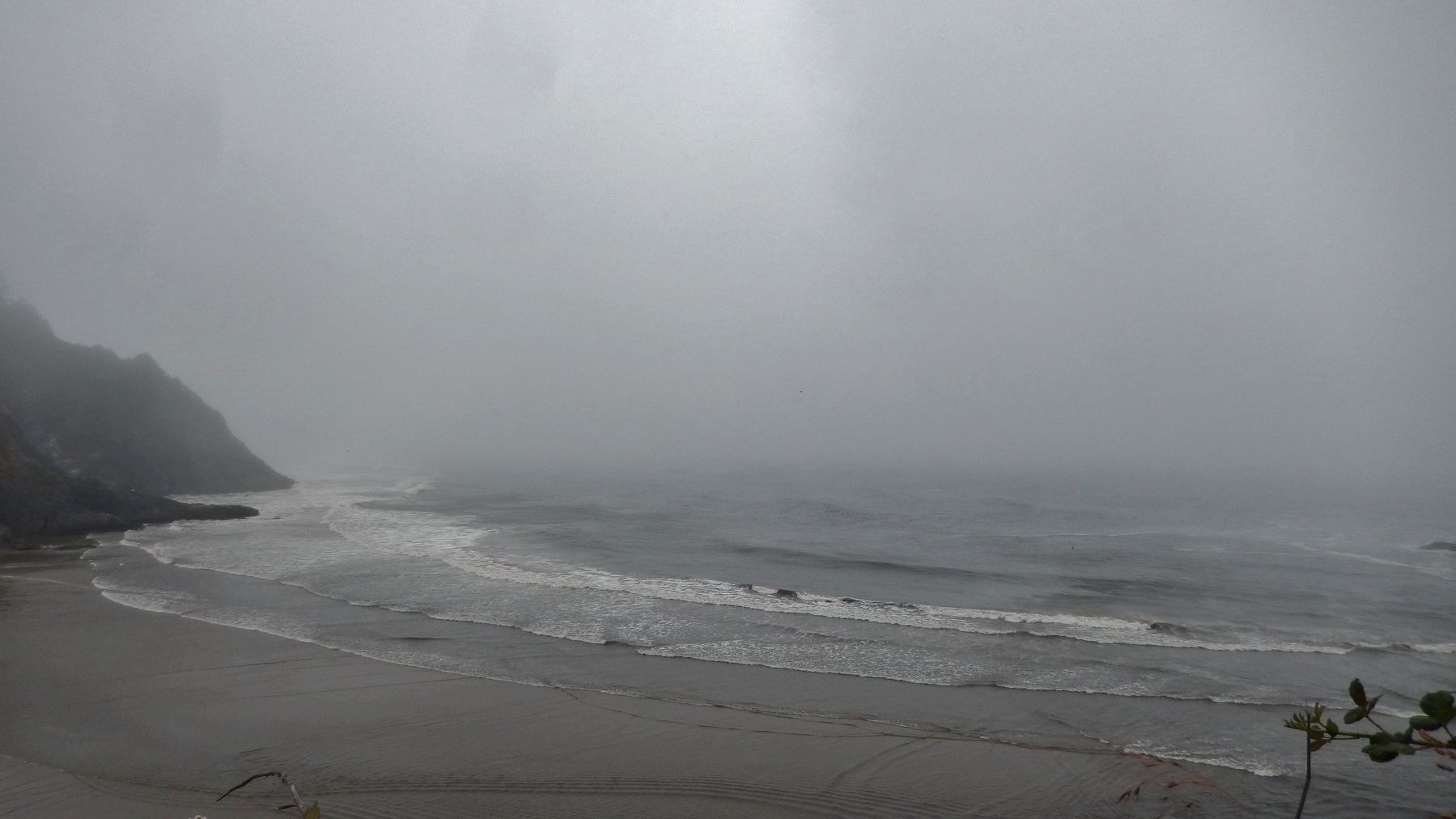Near Florence in Lane County, Oregon — The American West (Northwest)
Designed for Seafarer Safety
From top to bottom, Heceta Head Lighthouse
is built to guide from afar.
The lightís height was most likely chosen to maximize its range while minimizing the chances it would be hidden by fog. Unlike most Fresnel lenses of the day, which were made in France, the lens at Heceta Head was made in England, and is the largest English lens of its type in the U.S. Hecetaís light is the brightest light on the Oregon Coast.
Lighthouse Lingo
Fresnel lens: parabolic type lens invented by French physicist Augustin Fresnel, classified by size into six orders (first order being the largest). This lens is a first order.
Kerosene: fuel used in the lamp to produce light.
Lens: curved piece of glass used to bring together or spread light.
Bullís-eye: convex lens used to concentrate (refract) light.
Characteristic: individual flashing pattern and/or color of light.
Clockworks: series of gears, chains, and counterweights used to rotate the lens (similar to a grandfather clock).
Revolving light: rotating beam of light that produces a flash or characteristic.
Gallery: railed platform outside the lantern room.
Lantern room: area with glass panels surrounding the lamp and lens at the top of the tower.
How Does a Fresnel Lens Work?
Light shining through a flat plate of glass would disperse in all directions. But light shining through a Fresnel lens hits the angled cuts on the glass and is bent until it all faces outward in the same direction.
The Fresnel lens is a technology invented in 1822. The eight-sided lens continuously rotates around the light. One of the eight bullís-eyes in the lens passes by the marinerís eye every 10 seconds, creating a characteristic flash pattern used to identify the source and triangulate position. This flash can be seen 21 miles out to sea before it is obstructed by the curvature of the earth.
Topics. This historical marker is listed in these topic lists: Man-Made Features • Science & Medicine • Waterways & Vessels.
Location. 44° 8.235′ N, 124° 7.66′ W. Marker is near Florence, Oregon, in Lane County. Marker can be reached from Cape Creek Road west of Oregon Coast Highway (U.S. 101) when traveling west. Marker is located near Heceta Head Lighthouse, on Summer Street, beyond the end of the path leading up from the Heceta Head State Scenic Viewpoint parking lot. The Marker is on the uphill side of Summer Street, before
the first of two oil houses. Touch for map. Marker is at or near this postal address: 725 Summer Street, Florence OR 97439, United States of America. Touch for directions.
Other nearby markers. At least 8 other markers are within 12 miles of this marker, measured as the crow flies. A Battle With the Elements (a few steps from this marker); Road Behind And Sea Beyond (within shouting distance of this marker); Hard Work at a Lonely Light (about 500 feet away, measured in a direct line); Heceta Head Lightstation (approx. ľ mile away); Technology Spans (approx. 0.4 miles away); Giant Spruce of Cape Perpetua (approx. 10.1 miles away); Harbor Theater (approx. 11.8 miles away); The Kyle Building (approx. 11.9 miles away). Touch for a list and map of all markers in Florence.
Regarding Designed for Seafarer Safety. National Register of Historic Places (1978)
Also see . . .
1. The incredible Fresnel lens.
Fresnel's design was a barrel-shaped array of lenses encircling the light source. In the area immediately horizontal to the light source, dioptric lenses magnified and concentrated the visible light as it passed directly though them. At the same time, above and below the light source, multiple catadioptric prisms mounted around the periphery of the barrel each collected and intensified the light and redirected it in the same plane as the dioptric lenses. With Fresnel's optic array, output was increased dramatically from the old reflector systems, with as much as eighty percent of the light transmitted over twenty miles out to sea. (Submitted on January 28, 2018, by Cosmos Mariner of Cape Canaveral, Florida.)
2. Heceta Head Lighthouse.
The towerís first-order Fresnel lens was manufactured in Birmingham, England by Chance Brothers. Most Fresnel lenses installed in U.S. lighthouses were produced in France, but besides Heceta Head, Chance Brothers lenses were also used at Point Cabrillo and Anacapa Island in California, and in Staten Island Lighthouse in New York. The Heceta Head lens has 640, two-inch-thick prisms, arranged in eight bullís-eye panels, and revolves to produce brilliant white flashes. (Submitted on January 28, 2018, by Cosmos Mariner of Cape Canaveral, Florida.)
Credits. This page was last revised on October 19, 2020. It was originally submitted on January 25, 2018, by Cosmos Mariner of Cape Canaveral, Florida. This page has been viewed 218 times since then and 19 times this year. Photos: 1. submitted on January 25, 2018, by Cosmos Mariner of Cape Canaveral, Florida. 2, 3, 4, 5, 6. submitted on January 28, 2018, by Cosmos Mariner of Cape Canaveral, Florida. • Andrew Ruppenstein was the editor who published this page.
